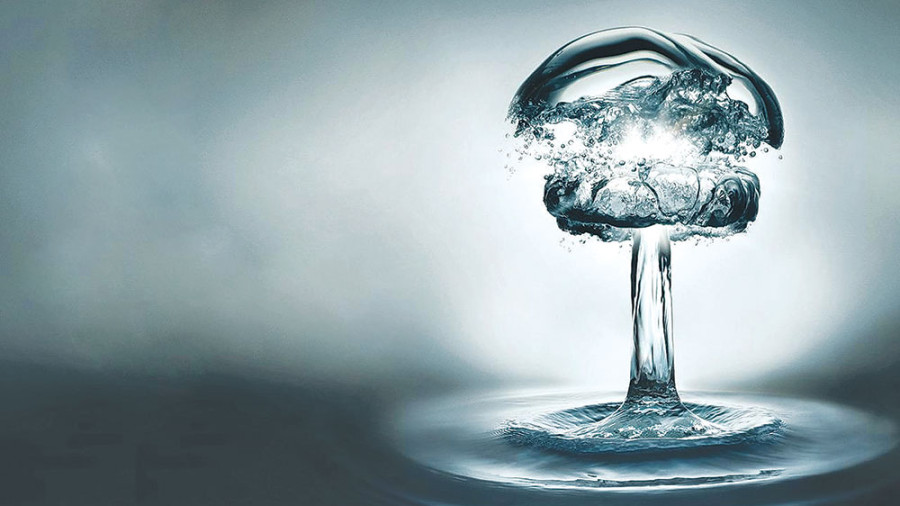Opinion
Water bomb
Nepal’s rivers are a disaster waiting to happen in the monsoon, and this worries India
Pawan Roy & Saurav Raj Pant
Nepal shares a 1,751km open and porous border with India to the east, south and west. Rivers charge down from the Himalaya and pass through Nepal to India to mix with the Bay of Bengal. According to the Water and Energy Commission Secretariat, Nepal’s hydropower potential is estimated at 43,000 MW. Nepal and India both face problems due to uncontrolled flow of water during the monsoon. Rivers swollen by the monsoon rains regularly break their banks and inundate vast areas in the southern plains of Nepal and parts of the adjoining Indian states of Bihar and Uttar Pradesh.
India has built 15 dams to control the rivers flowing down from Nepal. They are Purna Giri Dam, Tanakpur Barrage, Sharada Barrage, Kailashpur Dam, Laxampur Dam, Koilabas Dam, Mahilisagar Dam, Rasiwal-Khurdalotan Dam, Dandapharena Dam, Gandak Barrage, Lalbakiya Dam, Berginiya Dam, Bagmati Dam, Kamala Dam, Siraha Dam, Khado Dam, Koshi Barrage and Luna River Dam. Nepal’s river diplomacy is very weak. It has a limited Track 2 diplomatic approach, and India’s bureaucracy, which is inherited from the British Raj, has always exhibited strong negotiating power.
Preservation of interests
Due to Nepal’s divided political, social and economic communities, it has weak negotiating power to preserve national interests. One notable treaty with India is the Tanakpur Accord signed in 1996 for the development of three barrages—Sarada, Tanakur and Pancheshwor—to provide irrigation and generate power. This treaty, which will produce 5,600 MW of electricity for Nepal, has stalled due to unverified reasons. During Prime Minister Sher Bahadur Deuba’s visit to India last August, it was agreed that a detailed project report would be released within a month. The Koshi agreement was signed in 1954 to control floods and build dams to prevent the river from changing its course because it has shifted 120km to the west in the last 250 years. This deal is another pressing issue in Nepal’s political circles.
The Koshi agreement was revised in 1966 because Nepal was dissatisfied with the provision under which Nepali territory has been leased to India on a non-transferable basis. The Koshi Dam has crossed its age limit and alarm bells have been set off. An Upper Koshi Dam construction project has been planned to limit the load on the old Koshi Dam. During Prime Minister Deuba’s visit to India in August, India and Nepal agreed to prepare a detailed project report for the project. Another agreement with India is the Gandak agreement signed in 1959 to provide irrigation and free movement of people and goods while generating hydropower. This accord was engulfed in controversy after Nepal was barred from trans-valley use of the Gandak water during the dry months from February and April.
There are casualties in both Nepal and India’s Bihar state when there is a flood in the river system. Around 120 people reportedly died in last August’s floods in Nepal while the death toll in Bihar was 418. For this reason, India’s concern in Nepal is water management, not production of hydroelectricity. According to a report, India produces 65 percent of its energy requirement from thermal power plants, 22 percent from hydroelectric power plants, 3 percent from nuclear plants and 10 percent from alternative sources like solar and wind. India meets 53.7 percent of its commercial energy demand by using its vast coal reserves. The southern neighbour currently produces 330.15 GW while Nepal’s power output stands at 757 MW.
Taking responsibility
The peoples of Nepal and India should understand that water flowing from Nepal to India is a geo-natural phenomenon and it will continue forever. The two governments should manage these waters responsibly. If the rivers are allowed to flow uncontrolled by dams, embankments or any sort of protection, they could cause great damage in Nepal and a catastrophe in the Indian states of Uttar Pradesh and Bihar. So, there should be protection for Nepalis and Indians. Now the question arises: How will Nepal manage water in its own territory? Should it build dams at its own cost or develop advanced technology to mitigate floods? Also, Nepal needs to exploit the rivers for electricity and irrigation. India’s concern in Nepal is managing water, and it perceives Nepali water as an open ‘water bomb’ against its states. Nepal can’t remain mute when its water is creating disaster in another country. So, to mitigate this issue, building dams and impounding the water are the only currently available options. Nepali leaders should explore the possibilities of obtaining benefits from these dams by way of irrigation and hydroelectricity. The Nepali public should be clear that if any country invests in another country, it has an interest. So, India also has an interest in building dams in Nepal which is to prevent natural disasters. If Nepal does not want Indian hegemony, it should be prepared to build dams on its own and relocate people from flood-prone areas.
The Nepali media should also understand that rivers flowing down from Nepal to India are a geo-natural issue, not a geopolitical issue; and it should not be perceived as a struggle for survival between the two giant neighbours. So, the simple answer to the entire mess is this: Nepal should scale up its interest and lessen India’s overarching interest by strengthening its negotiating power.
Roy is an international relations student at TU; Pant is a development consultant




 6.12°C Kathmandu
6.12°C Kathmandu










%20(1).jpg&w=300&height=200)

